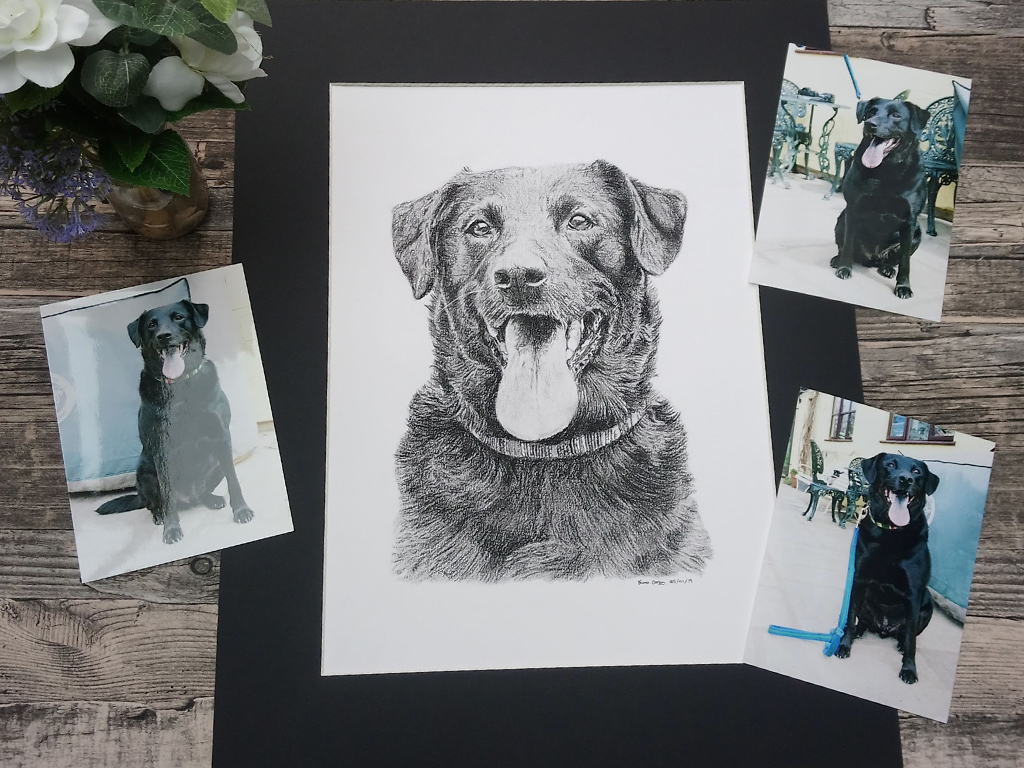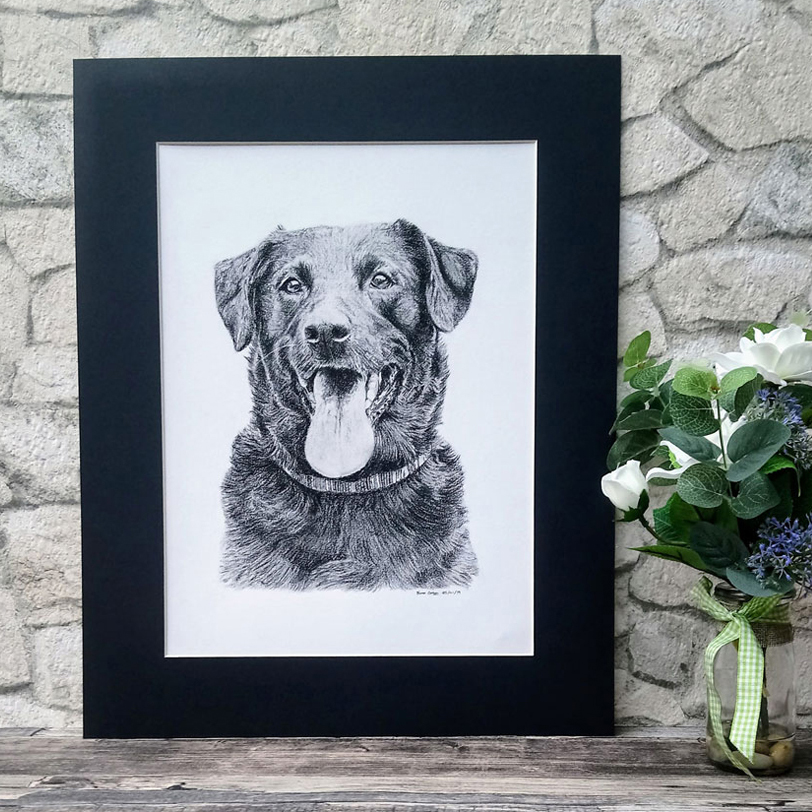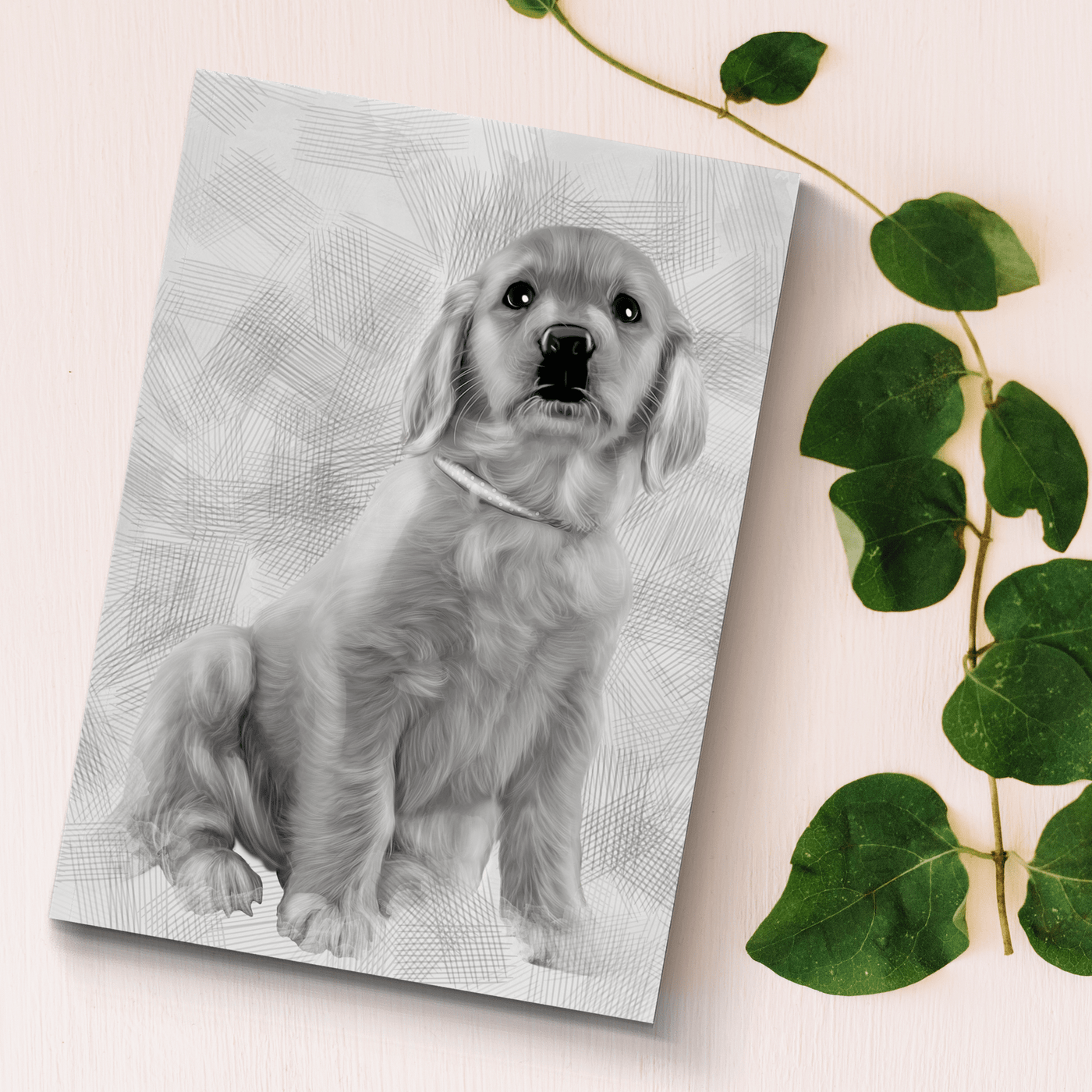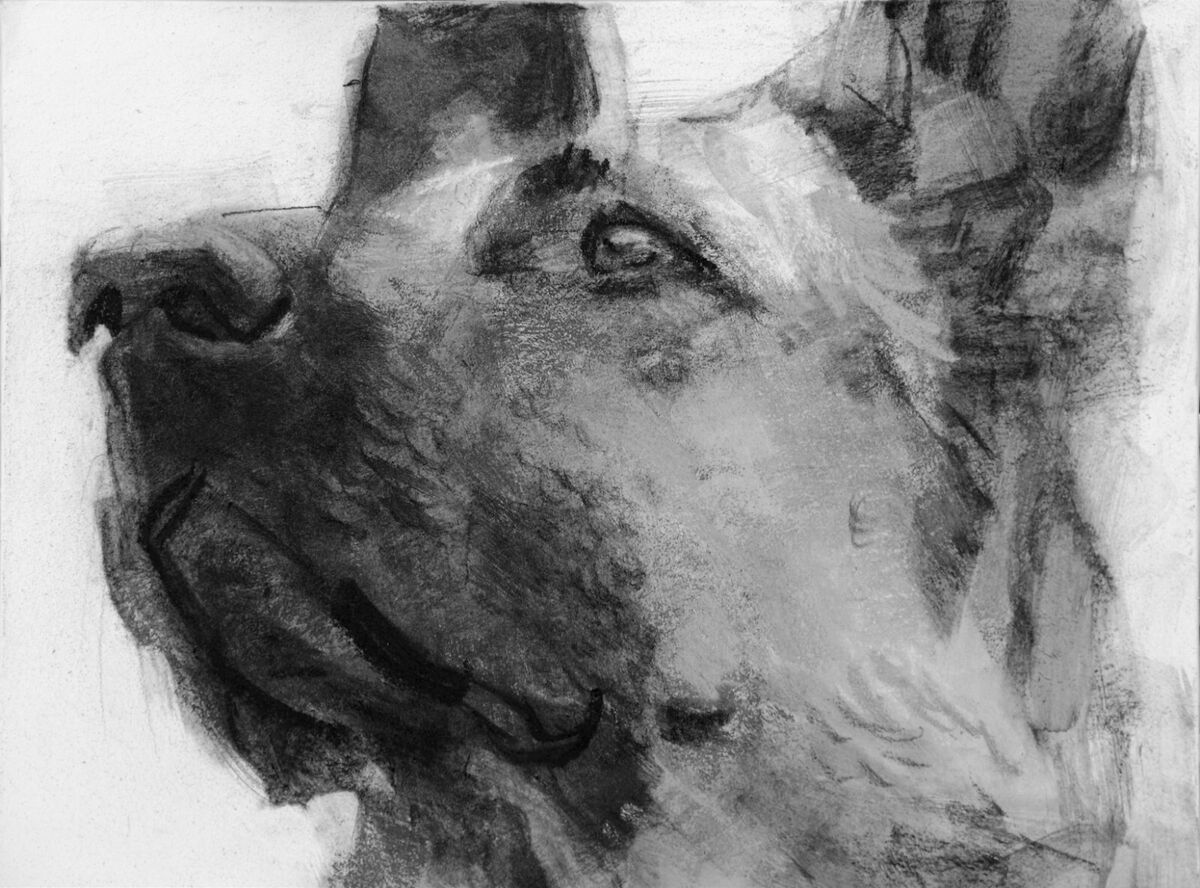The art of capturing the essence of a dog on paper with charcoal is both challenging and rewarding. Charcoal offers a unique medium through which artists can express the depth, movement, and emotion of their canine subjects. This guide provides techniques and tips for artists at any level to master the art of dog charcoal drawing, turning simple sketches into soulful portraits.
Setting the Stage: Preparing for Charcoal Drawing
Choosing the Right Materials
To begin, selecting the right type of paper is crucial for charcoal drawing. Opt for a heavyweight, textured paper that can hold the charcoal without smudging easily. For charcoal, artists have a choice between sticks, pencils, or powder, each offering a different level of control and intensity. A kneaded eraser is also a must-have as it helps to lift off charcoal, create highlights, and refine details.
Understanding Your Subject
Before drawing, study the canine subject. Take note of the dog’s individual characteristics: the shape of its face, the way its fur lies, and its distinct expressions. Work from a reference photograph or, if possible, observe a live model to understand the dynamics of its posture and personality. This initial study will guide your drawing process and inspire a more lifelike portrayal.

Laying the Groundwork: Sketching the Outline
Establishing Proportions
Start with light, loose strokes to outline the basic shape and proportions of the dog. Use basic geometric shapes to represent the body parts and connect them to form a coherent structure. Be mindful of the dog’s stance, angle, and proportions during this phase — accuracy in these early stages forms the foundation for a realistic representation.
Blocking Out Shadows
Next, identify the major areas of light and shadow on your subject. Block in the darkest shadows lightly with charcoal. This step is not about details; it’s about establishing a map of the tonal values across the dog’s form. Where is the light source? How does it affect the appearance of the fur, the eyes, and the shape of the dog’s face and body? Answering these questions will create a more three-dimensional form on the paper.

Fine-Tuning: Developing Texture and Contrast
Crafting Fur Texture
The texture of a dog’s fur is essential in charcoal drawing and requires patience and observation. Use the side of a charcoal stick to lightly layer in the fur’s direction and length. Build up the layers gradually, increasing the pressure to create deeper tones. For longer fur, utilize sweeping strokes, while for shorter fur, shorter and stiffer marks are appropriate. Remember to leave areas white where highlights are strongest.
Amplifying Contrast
Contrast is the soul of charcoal drawing. Revisit the dark and light areas to amplify the contrast. Use a soft charcoal pencil to darken the deepest shadows and a fine-pointed eraser to bring out the highlights, particularly around the eyes, nose, and areas where the fur catches the light. Adjust the tonal values until you achieve a balance that brings the dog to life.

Expression and Life: Capturing the Dog’s Essence
Eyes That Speak
The eyes are often said to be the windows to the soul, and that holds true in dog charcoal drawings. Pay extra attention to the eyes — ensure they have depth and reflect light correctly. Depict the wetness of the eyes with pinpointed highlights and shade around them subtly to create depth.
Infusing Personality
Portraying the dog’s personality comes from combining all previous steps with acute observation of the subject’s demeanor. A slight tilt of the head, the set of the ears, the orientation of the tail—all these aspects contribute to the dog’s character. Allow these features to shine through by accentuating them subtly with charcoal.

Finishing Touches: Refining and Perfecting the Drawing
Reviewing the Composition
Take a moment to step back and review the drawing in its entirety. Look at the composition, balance, and overall feel. Make sure the drawing leads the viewer’s eye across the work, focusing attention on the most important aspects of the dog’s form and character.
Final Refinements
With a careful eye, refine any areas that require additional detail or tonal adjustments. Ensure that the darkest darks are in harmony with the brightest highlights and that the textures are consistent with the type of fur you’re representing. Clean up any smudges, and use a final fixative spray to protect the drawing from smearing and absorbing dirt and oil.

Embracing the Process: The Journey of Creation
Enjoying Each Step
Getting to know your medium is half the fun of creating art. With charcoal, each stroke is a learning experience. Embrace both the successes and mishaps that happen along the way. Enjoy the process of seeing your dog come to life on the page, from the loose initial sketches to the final defined edges. This mindset will not only help you develop skills but also foster a deeper connection with your work.
Experimenting with Techniques
Be open to experimenting with different charcoal drawing techniques. Sometimes, using a rough eraser can create an interesting texture for the dog’s fur, or applying charcoal with your fingers can give a softer, more natural shadow. There is no fixed rule when it comes to art. The more you play around with the charcoal, the more you will discover what works best for you and your style.
Reflecting and Learning: The Path to Mastery
Assessing Your Work
After completing a drawing, spend time reflecting on it. What went well? What needs improvement? Maybe the shadows need to be deeper next time, or perhaps the fur texture could be more refined. Critiquing your work constructively is an essential part of growing as an artist. Keep a portfolio of your charcoal dog drawings to track your progress over time.
Continuous Learning
Every drawing is a building block in your journey to mastery. Research techniques, watch tutorials, and take inspiration from other artists. Each new piece of information will add to your artistic arsenal, making your charcoal drawings more sophisticated. With continuous learning, you can keep your approach fresh and your skills sharp.
A Tribute to the Canine Form
Charcoal drawing is a dynamic process that captures more than just the likeness of a dog; it’s about bringing forth the spirit and vitality of the animal. With the right materials, careful observation, and delicate execution of techniques, artists can produce charcoal drawings that not only showcase their mastery over the medium but also pay tribute to the rich personalities and beauty of their canine subjects.